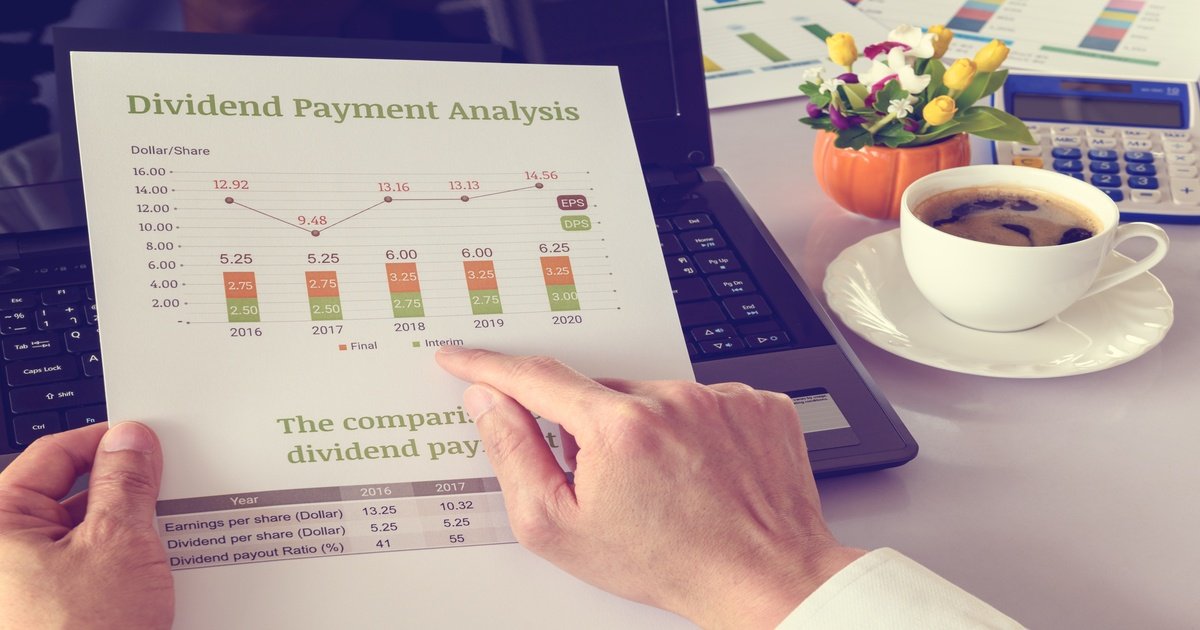Debt-to-Equity (D/E) Ratio
The debt-to-equity (D/E) ratio is a metric that shows how much debt, relative to equity, a company is using to finance its operations.
To calculate it, you divide the company's total liabilities by total shareholder equity, like so:
Debt-to-equity ratio = total liabilities / total shareholders' equity
Investors can use the D/E ratio as a risk assessment tool since a higher D/E ratio means a company relies more on debt to keep going.
Below is an overview of the debt-to-equity ratio, including how to calculate and use it.
What is the debt-to-equity ratio?

The debt-to-equity ratio divides total liabilities by total shareholders' equity, revealing the amount of leverage a company is using to finance its operations.
Liabilities are items or money the company owes, such as mortgages, loans, etc.
When making comparisons between companies in the same industry, a high D/E ratio indicates a heavier reliance on debt. This means the company is taking on more risk.
Simply put, the higher the D/E ratio, the more a company relies on debt to sustain itself. Alongside this comes interest expenses that can erode profit.
On the other hand, a comparatively low D/E ratio may indicate that the company is not taking full advantage of the growth that can be accessed via debt.
For growing companies, the D/E ratio indicates how much of the company's growth is fueled by debt, which investors can then use as a risk measurement tool.
For companies that aren't growing or are in financial distress, the D/E ratio can be written into debt covenants when the company borrows money, limiting the amount of debt issued.
Of note, there is no “ideal” D/E ratio, though investors generally like it to be below about 2.
Determining whether a company's ratio is good or bad means considering other factors in conjunction with the ratio.
SummaryThe debt-to-equity ratio is a way to assess risk when evaluating a company. The ratio looks at debt in relation to equity, providing insights into how much debt a company is using to finance its operations.
How to calculate the debt-to-equity ratio
Here is the formula for the debt-to-equity ratio:
Debt-to-equity ratio = total liabilities / total shareholders' equity
Total liabilities are all of the debts the company owes to any outside entity.
In most cases, liabilities are classified as short-term, long-term, and other liabilities. The amount for total liabilities can be found on the balance sheet.
The debt-to-equity ratio formula may also be listed as:
Debt-to-equity ratio = total debt / total shareholders' equity
Total shareholders' equity can be calculated as follows:
Total shareholders' equity = total assets - total liabilities
Put another way, if a company was liquidated and all of its debts were paid off, the remaining cash would be the total shareholders' equity.
SummaryThe D/E ratio looks at debt relative to equity. You can find the inputs you need for this calculation on the company's balance sheet.
Example D/E ratio calculation
To see the formula in action, it's helpful to calculate an example.
As noted above, the numbers you'll need are located on a company's balance sheet.
You can find the balance sheet on a company's 10-K filing, which is required by the US Securities and Exchange Commission (SEC) for all publicly traded companies.
You can also find the data needed on stock information websites like Stock Analysis.
The following D/E ratio calculation is for Restoration Hardware (RH) and is based on its 10-K filing for the financial year ending on January 29, 2022.

Source: Restoration Hardware's 10-K
Here is the D/E calculation, in USD thousands:
Debt-to-equity = $4,370,193 / 1,170,277 = 3.73
This figure means that for every dollar in equity, Restoration Hardware has $3.73 in debt.
To get a sense of what this means, the figure needs to be placed in context by comparing it to competing companies.
As an example, the furnishings company Ethan Allen (ETD) is a competitor to Restoration Hardware. The 10-K filing for Ethan Allen, in thousands, lists total liabilities as $312,572 and total shareholders' equity as $407,323, which results in a D/E ratio of 0.76.
This means that for every dollar in equity, the firm has 76 cents in debt.
It's clear that Restoration Hardware relies on debt to fund its operations to a much greater extent than Ethan Allen, though this is not necessarily a bad thing.
Restoration Hardware's cash flow from operating activities has consistently grown over the past three years, suggesting the debt is being put to work and is driving results. Additionally, the growing cash flow indicates that the company will be able to service its debt level.
However, if that cash flow were to falter, Restoration Hardware may struggle to pay its debt.
SummaryYou can calculate the D/E ratio of any publicly traded company by using just two numbers, which are located on the business's 10-K filing. However, it's important to look at the larger picture to understand what this number means for the business.
What is a “good” debt-to-equity ratio?
As you can see from the above example, it's difficult to determine whether a D/E ratio is “good” without looking at it in context.
Additional factors to take into consideration include a company's access to capital and why they may want to use debt versus equity for financing, such as for tax incentives.
It's useful to compare ratios between companies in the same industry, and you should also have a sense of the median or average D/E ratio for the company's industry as a whole.
It's also helpful to analyze the trends of the company's cash flow from year to year.
The general consensus is that most companies should have a D/E ratio that does not exceed 2 because a ratio higher than this means they are getting more than two-thirds of their capital financing from debt. As this figure rises, the debt costs become more burdensome.
Put simply, as the D/E ratio rises, so does the company's risk.
Some investors also like to compare a company's D/E ratio to the total D/E of the S&P 500, which was approximately 1.58 in late 2020 (1).
It's also important to note that interest rate trends over time affect borrowing decisions, as low rates make debt financing more attractive.
As an example, many nonfinancial corporate businesses have seen their D/E ratios rise in recent years because they've increased their debt considerably over the past decade. Over this period, their debt has increased from about $6.4 billion to $12.5 billion (2).
Finally, it's useful to know that the average D/E varies considerably by industry. As examples, here are some industry average D/E ratios for 2021 (3):
- Apparel & accessories stores: 1.66
- Communications: 1.23
- Railroad transportation: 2.00
- Hotels & other lodging: 2.71
- Transportation equipment: 0.78
The full list of averages per sector can be found here.
SummaryTo interpret a D/E ratio, it's helpful to have some points of comparison. These can include industry averages, the S&P 500 average, or the D/E ratio of a competitor.
Limitations of the D/E ratio
While a useful metric, there are a few limitations of the debt-to-equity ratio.
1. The D/E ratio alone is not enough to get the full picture
One limitation of the D/E ratio is that the number does not provide a definitive assessment of a company. In other words, the ratio alone is not enough to assess the entire risk profile.
When interpreting the D/E ratio, you always need to put it in context by examining the ratios of competitors and assessing a company's cash flow trends.
And, when analyzing a company's debt, you would also want to consider how mature the debt is as well as cash flow relative to interest payment expenses.
2. The D/E ratio can be hard to interpret
The D/E ratio contains some ambiguity because a healthy D/E ratio often falls within a range. It may not always be clear to an investor whether the D/E ratio is, in fact, too high or low.
For example, manufacturing companies tend to have a ratio in the range of 2–5. This is because the industry is capital-intensive, requiring a lot of debt financing to run.
Airlines, as well as oil and gas refinement companies, are also capital-intensive and also usually have high D/E ratios.
For this reason, it's important to understand the norms for the industries you're looking to invest in, and, as above, dig into the larger context when assessing the D/E ratio.
3. Interpreting the D/E ratio requires some industry knowledge
When assessing D/E, it's also important to understand the factors affecting the company.
For example, consider an investor assessing a utility company. They may note that the company has a high D/E ratio and conclude that the risk is too high. However, this is not the whole picture.
The investor has not accounted for the fact that the utility company receives a consistent and durable stream of income, so is likely able to afford its debt.
The other important context here is that utility companies are often natural monopolies. As a result, there's little chance the company will be displaced by a competitor.
These industry-specific factors definitely matter when it comes to assessing D/E.
SummaryThe D/E ratio is much more meaningful when examined in context alongside other factors. Therefore, the overarching limitation is that ratio is not a one-and-done metric.
Frequently asked questions
Below are some frequently asked questions about the D/E ratio.
What does a negative D/E ratio mean?
If the D/E ratio of a company is negative, it means the liabilities are greater than the assets.
Most companies can't operate in this condition. If a D/E ratio becomes negative, a company may have no choice but to file for bankruptcy.
What is the long-term D/E ratio?
Some analysts like to use a modified D/E ratio to calculate the figure using only long-term debt.
They do so because they consider this kind of debt to be riskier than short-term debt, which must be repaid in one year or less and is often less expensive than long-term debt. Short-term debt is also less sensitive to interest rates.
Here is the formula for long-term D/E:
Long-term debt-to-equity = long-term debt / shareholders' equity
What are gearing ratios and how does the D/E ratio fit in?
Gearing ratios are financial ratios that indicate how a company is using its leverage. All gearing ratios compare equity to debt in the same way.
The D/E ratio is part of the gearing ratio family and is the most commonly used among them.
Like the D/E ratio, all other gearing ratios must be examined in the context of the company's industry and competitors.
Why is a low D/E ratio sometimes a bad thing?
Sometimes, a company has almost no debt and a large cash reserve.
In this case, the D/E ratio will be low. At first glance, this may seem good — after all, the company does not need to worry about paying creditors.
However, in this situation, the company is not putting all that cash to work. Investors may become dissatisfied with the lack of investment or they may demand a share of that cash in the form of dividend payments.
Why are D/E ratios so high in the banking sector?
Banks often have high D/E ratios because they borrow capital, which they loan to customers.
The nature of the baking business is to take customer deposits, which are liabilities, on the company's balance sheet. For this reason, banks are inherently required to be leveraged.
Banks also tend to have a lot of fixed assets in the form of nationwide branch locations. This can also increase the ratio.
The takeaway
The D/E ratio indicates how reliant a company is on debt to finance its operations.
There is no universally agreed upon “ideal” D/E ratio, though generally, investors want it to be 2 or lower.
Assessing whether a D/E ratio is too high or low means viewing it in context, such as comparing to competitors, looking at industry averages, and analyzing cash flow.
A D/E ratio that is high relative to similar companies may indicate the business is too dependent on debt to fund operations, while a D/E ratio that is low relative to peers may indicate that the company is not taking full advantage of growth opportunities.
Overall, the D/E ratio provides insights highly useful to investors, but it's important to look at the full picture when considering investment opportunities.





